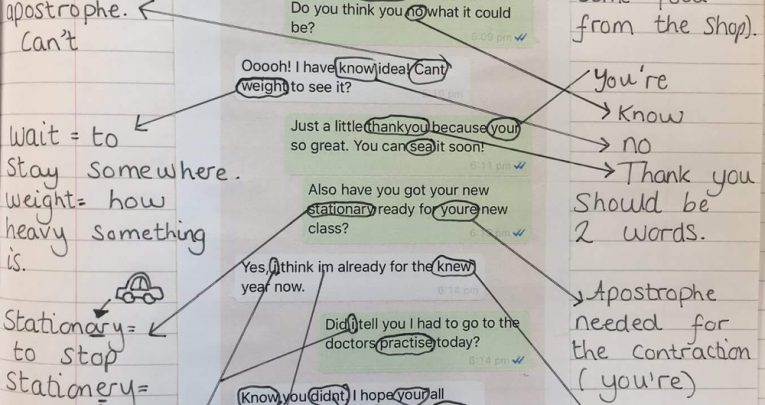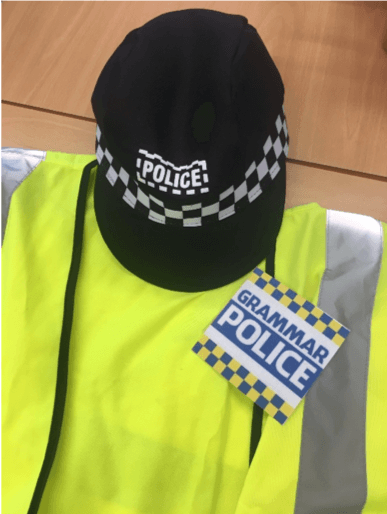5 ways to teach grammar creatively and promote reading

Jasmine Kay provides you with some little gems to update or strengthen your practice…

- by Jasmine Kay

As a teacher, I spend a painfully long time correcting shop signs and Facebook posts in my head.
Grammar mistakes are everywhere within our society but now I rarely need to correct homophones or missing apostrophes within my class after modernising my approach to teaching English.
The intensity of the Y6 grammar curriculum has been ridiculed by many tabloids but I can definitely see its benefits and aim to teach such topics creatively.
Personally, I am amazed at how many of my 11-year-olds would be able to spot how the lack of punctuation has caused ambiguity within my first sentence.
1 | Grammar Police
 I introduced the concept of Grammar Police across the school.
I introduced the concept of Grammar Police across the school.
Each lesson, a child is chosen to dress up as a police officer and parade around the room correcting grammar mistakes that they can spot in their peers’ books.
It works a treat: the children are keen to impress the officer and I rarely correct frustrating errors.
2 | Txt spk

I regularly take pictures of real-life grammar mistakes which my class find very amusing.
To engage them further, I recently had a cringe-worthy conversation with a colleague via text message.
We deliberately made spelling, punctuation and grammar errors within our messages. I took photos of the text messages and invited my class to correct the mistakes.
The children were outraged by the errors and took great pleasure in correcting their teachers!
Due to the success of this task, I plan to adapt this strategy in the future by using text messages from characters in their class reading.

3 | Use social media
Embracing social media and using it to engage children within their lessons can be very successful. Twitter also provides me with daily CPD.
I spot fabulous practice and make a point of sharing new resources and strategies within my own school community.
Authors are also keen to engage with teachers on Twitter. I have received dozens of letters and postcards from famous writers to share in my school assemblies. Their words of wisdom have persuaded the most reluctant of readers to pick up a book.
4 | Xmas book advent

Another way I promote reading is by launching a book advent every Christmas. I buy around 500 secondhand books from charity shops and car boot sales.
Remarkably, I never spend more than £100 but every child in my school receives a book during December. Our team of child librarians wrap them and the children are encouraged to exchange them in our book swap boxes when they have finished reading their gift.
5 | Boost book collections on a budget
Budgets are tight, but updating book corners and libraries doesn’t have to be expensive when you’re prepared to shop secondhand. If you still have reluctant readers, read to them.
I’ve been known to read a page of a book to my class and return it to its shelf. By the end of the day, the book tends to be in someone’s bag ready for bedtime reading.
Audiobooks are good too. I particularly love them because they model the correct pronunciation of ambitious vocabulary that can often be mispronounced. An alternative to reading comprehension that has worked well within my lessons is to model inference skills by dissecting song lyrics.
Song comprehension cannot completely replace guided reading based around the study of a book. However, it has its place in engaging children and delivering key skills.
Whole-school trips to local libraries can also be big winners on the engagement front. We issued cards to nearly 75% of our pupils after visiting our local library recently.
Jasmine Kay is an experienced UKS2 teacher and English leader.










